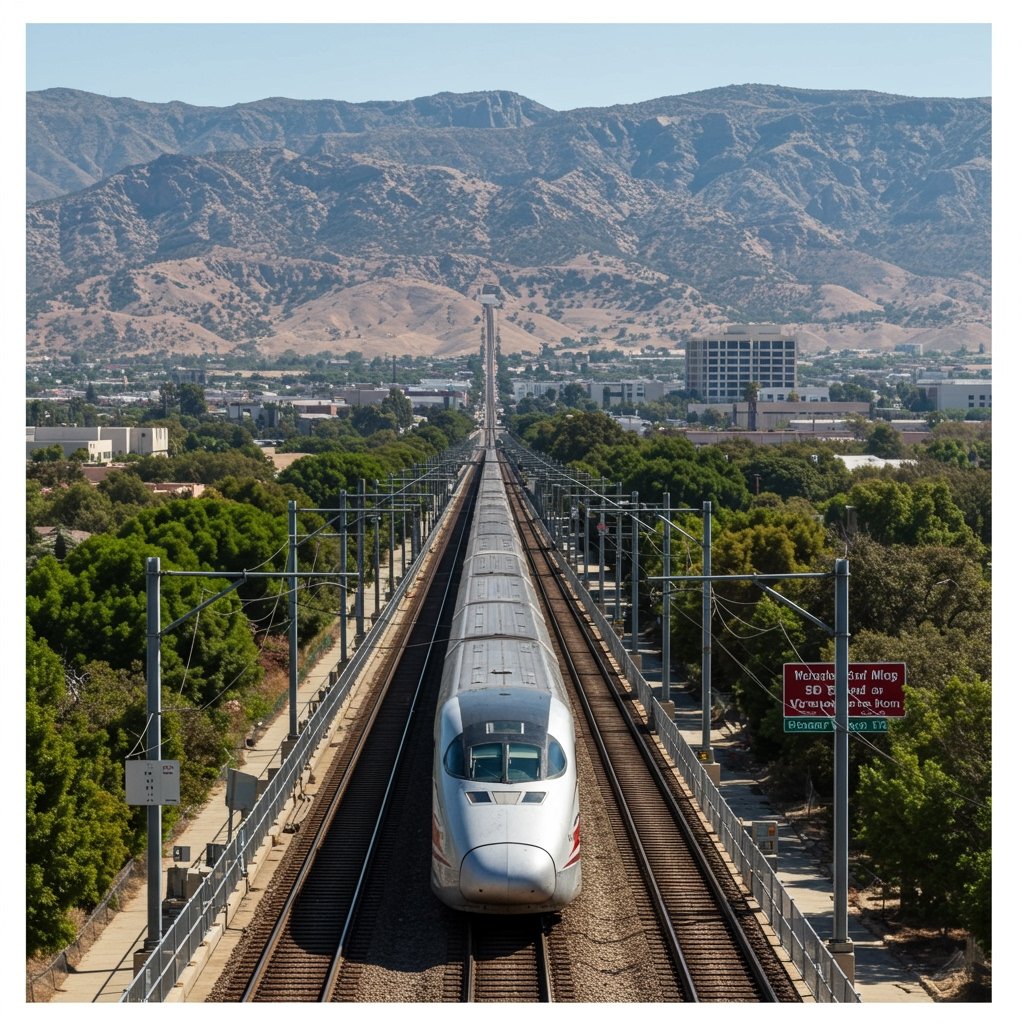Historic Funding Boost for California High-Speed Rail
California’s ambitious high-speed rail project reached a critical juncture on February 14, 2025, as state legislators approved Bill AB 42. This legislative action unlocks a significant $8 billion in state funding, specifically earmarked to accelerate the southern expansion of the rail network. The passage of AB 42 represents a major step forward for a project that aims to revolutionize intercity travel across the Golden State, linking major population centers with unprecedented speed.
The funding is precisely targeted at extending the line southwards from the operational Central Valley segment towards the densely populated Los Angeles Basin. This particular phase of construction involves some of the most technically challenging sections of the entire planned route, traversing complex geographical areas, notably the mountain passes separating the Central Valley from Southern California. Securing this substantial state investment is seen by proponents as essential to maintaining momentum and tackling these formidable engineering hurdles.
AB 42: A Legislative Turning Point
The approval of AB 42 did not come without extensive debate, reflecting the project’s long and sometimes contentious history. However, proponents successfully argued for the strategic necessity of completing this crucial southern link to realize the full potential of the high-speed rail system. The bill’s passage on February 14, 2025, solidified legislative commitment, providing a much-needed infusion of capital beyond federal allocations and previous state bond measures.
The $8 billion authorized by AB 42 is designated to expedite construction activities. This includes everything from land acquisition and environmental mitigation to the complex civil engineering required for tunnels, bridges, and track installation through challenging terrain. The focus is squarely on accelerating the pace of work necessary to connect the currently isolated Central Valley line to the greater Los Angeles area, a connection deemed vital for operational viability and ridership.
Accelerating the Southern Connection
The core objective of the $8 billion funding package from AB 42 is acceleration. Project officials have consistently pointed to the need for dedicated funding streams to maintain construction progress on multiple fronts simultaneously. This investment is expected to significantly shorten the timeframe required to complete the segments necessary for extending service southwards.
Specifically, the funding is intended to speed up the work required to allow for initial testing and potential limited service expansion south of Bakersfield. This area marks the southern terminus of the current Central Valley construction efforts. Connecting the line further south involves navigating the Tehachapi Mountains, a major natural barrier. The $8 billion is critical for intensive work in these mountain pass sections.
Project officials have stated that the acceleration enabled by this funding could advance the timeline for these critical milestones – testing and limited service south of Bakersfield – by several years. This represents a tangible outcome of the legislative victory, potentially bringing the benefits of high-speed rail closer to Southern California residents sooner than previously projected without this dedicated funding.
Path to Implementation: Governor Newsom’s Role
Following the legislative approval on February 14, 2025, Bill AB 42 now moves to the executive branch. Governor Gavin Newsom is anticipated to sign the bill into law next week. The Governor has been a vocal supporter of infrastructure investment, including the high-speed rail project, viewing it as a key component of California’s future transportation network and economic competitiveness.
The Governor’s signature will formally enact the provisions of AB 42, releasing the $8 billion for allocation to the California High-Speed Rail Authority. This step is crucial for transitioning the legislative intent into concrete construction contracts and intensified work on the ground, particularly in the difficult mountain pass sections and the approaches to the Los Angeles Basin.
Linking Key West Coast Hubs
The ultimate vision for the California High-Speed Rail project is to connect the state’s major metropolitan areas, creating a sustainable and efficient alternative to air and automobile travel. The link between the Central Valley segment and the Los Angeles Basin is arguably the most critical piece in achieving this vision for Southern California.
Connecting these regions has the potential to significantly transform travel time, drastically reducing hours spent driving or navigating airport procedures. This not only impacts commuters and business travelers but also opens up new possibilities for tourism and economic development across the state. The $8 billion secured through AB 42 on February 14, 2025, is a dedicated investment towards making this transformative connection a reality, accelerating the difficult southern push required to bridge the geographical divide.
Looking Ahead
While significant challenges remain for the overall project, including ongoing environmental reviews, land acquisition, and future funding needs for segments beyond the Los Angeles Basin, the passage of AB 42 and the securing of $8 billion represents a clear commitment from state legislators to advancing the southern expansion. This funding specifically enables intensified work on the critical mountain pass sections and accelerates the timeline for testing and potential limited service south of Bakersfield by several years, according to project officials.
The anticipated signing of the bill by Governor Gavin Newsom next week will solidify this progress, allowing the California High-Speed Rail Authority to leverage these significant state resources to accelerate construction towards the Los Angeles Basin. It marks a pivotal moment in the long development history of the project, focusing resources on the complex task of bringing high-speed rail to Southern California’s doorstep.



















